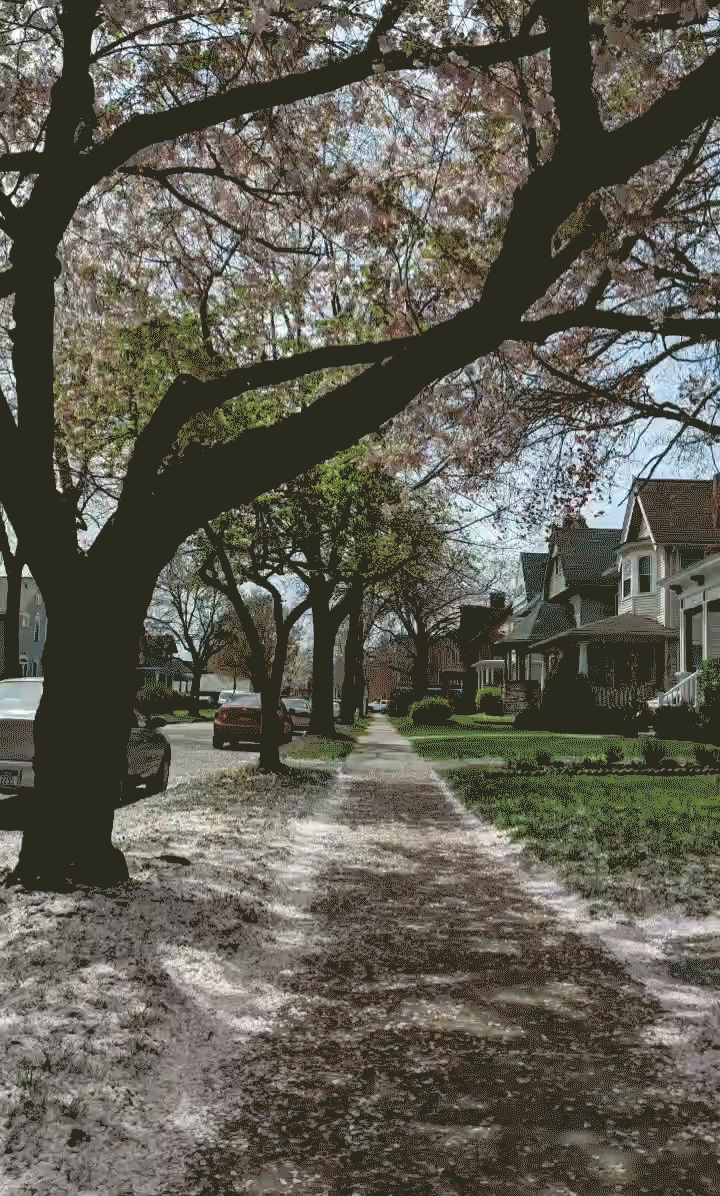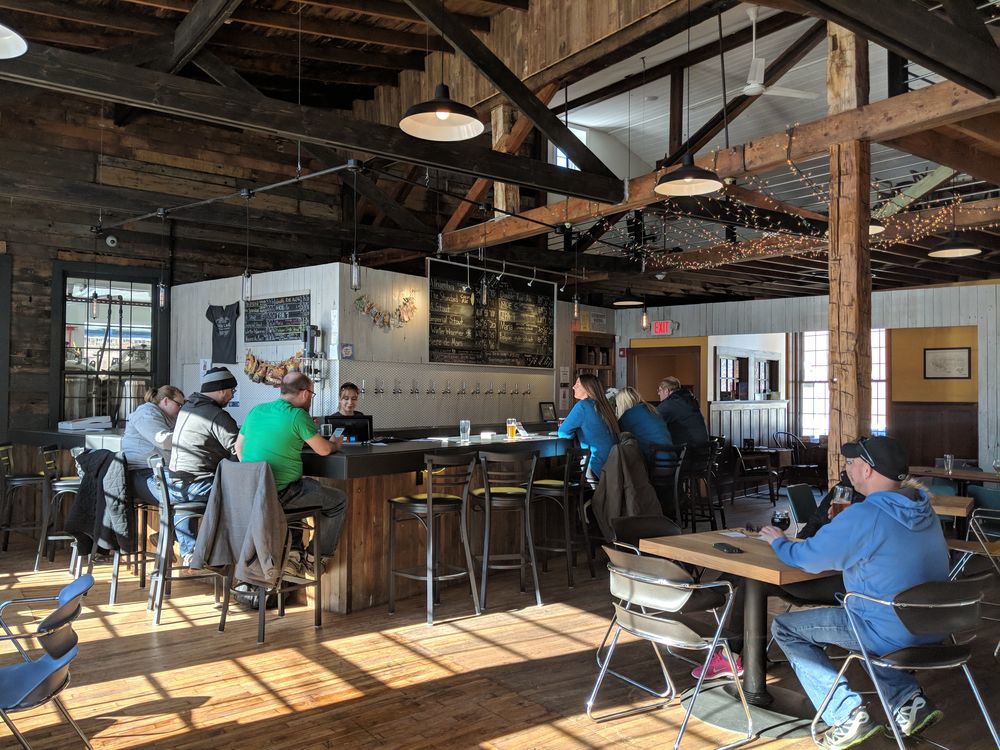
Celebrate Preservation Month!
- May 8, 2019
- 12:46 pm
- May 8, 2019
- 12:46 pm
Since we promote the social, cultural, and economic benefits of preservation year-round, we like to think that every month should be spent celebrating old places! Preservation Month is a great time to embrace and explore historic places in creative ways. Below, we’ve collected some of our favorite ways to celebrate. The National Trust for Historic Preservation has 31 more!
Share your love of old places on social media

Anyone can do it! Just grab your smart phone, head out the door, and snap some pictures of the places that matter to you. Whether it’s the old houses in your neighborhood, your favorite historic site, a neighborhood streetscape, restaurant or park — it doesn’t need to be a professional shot. Share what you love about the place and tag it with the hashtag: #ThisPlaceMatters.
If you want to make your outing a little more social, grab some friends for a group outing or organize an Instameet.
Advocate

The first step to saving a historic place is often making the public, elected officials, and the media aware of its existence. If there’s a special place in your community that’s neglected and in need of some TLC, start by spreading the word. Take a picture, use the #ThisPlaceMatters hashtag and start getting the word out. The National Trust for Historic Preservation offers a great This Place Matters toolkit, which includes free digital downloads that you can use on social media and print out at home. Once you’ve gotten the ball rolling, reach out to us! We’re happy to help.
Visit a historic site

There are lots of amazing historic sites in our region, from small museums run by all-volunteer organizations like the one-room, cobblestone 1826 Wallington Schoolhouse (pictured below) to professionally staffed sites like the Genesee Country Village & Museum, the Cobblestone Museum outside of Albion, and the Medina Railroad Museum (pictured above). The Ganondagan State Historic Site in Victor is a National Historic Landmark, the only New York State Historic Site dedicated to a Native American theme (1987), and the only Seneca town developed and interpreted in the United States. The Exploring Upstate blog is also a great source of inspiration for places to visit.

And, of course, you should also visit our historic sites! We’ll have two opportunities for you to visit the Ellwanger Garden on Mt. Hope Avenue in Rochester, during the weekends of the Lilac Festival (May 11, 12, 18 and 19 from 10 AM – 4 PM). Click here for more information.
Hold a new event

If you’re part of a non-profit organization that owns and operates a historic site, use Preservation Month as an excuse to host a fun event that brings new people through the door. You could host an open house with free (or reduced) admission; invite a local business or maker to sell their products and offer an additional lure to the public; do a special behind-the-scenes tour; offer a unique experience (like live music or a wine and cheese) inside the space; host a lecture, etc.
Our best advice:
- It doesn’t necessarily need to be complicated or costly.
- Get creative and think outside your normal routine!
- And find other non-profits or businesses that you can partner with who will help with organization, promotion, or entertainment.
It’s not just about the buildings…

Sure, older buildings are the most common resource that comes to mind when we talk about historic preservation, but did you know that we work with lots of other types of historic resources? They include historic landscapes (like parks, cemeteries, gardens, and rural landscapes), structures like bridges, sites where significant events have taken place (like a battlefield), and objects (like monuments, fountains, statues). At its roots, preservation is not just about the built environment; it’s about stories, culture, and people. Keep these things in mind as you explore your own or a new community and you might see and appreciate something new!
Research your house’s history

Ever wonder who built your house? Was it designed by an architect? How many families have lived in it over the years? What was the profession of the first owner? If you live in an older home, researching its history can be a fun project. With a little bit of patience, know-how, and the right resources you can potentially find the answers to these questions. City directories, maps, local newspapers, and local historical societies and libraries can all be great resources! (Side note: if you’re a research nut and you don’t know about the website Fulton History, you are missing out. It’s a searchable database of scanned newspapers from across NYS. Be sure to read the FAQs for important search tips.) Happy hunting and be careful–you might fall down the research rabbit hole! For more research tips, check out our Historic Building Research Guide. (You can also check out these tips from the National Trust).
Organize a workshop

If you run a historic site or community organization, one great way to serve your community and attract new visitors is to host a preservation-related workshop. A few ideas: work with a local craftsperson to organize a DIY repair workshop on the topic of your choice (historic wood window repair is a popular one!); recruit a local history expert to talk about the development of your community; or find a photographer who loves to shoot historic places and is willing to talk about his/her work and show participants how they can improve their photos. Or maybe there’s another preservation-related topic that your organization does well or is passionate about?
Organize a walking tour

Find an enthusiastic and knowledgeable person from your neighborhood or community and set them loose! The walking tour can cover the architecture, development, history, and/or note-able figures from your area. You could also find a theme that’s unique to your area: lost breweries, industrial history, stained glass windows, fun and funky porches of the neighborhood, and more!
Enjoy a good read (or podcast)

There are tons of preservation-related books, blogs, and podcasts out there. Whether you’re an amateur architectural historian, a professional planner, a community activist, a local history buff, or you just want to get lost in a good novel, there are plenty of options. A few of our favorites below:
- A Field Guide to American Houses, by Virginia McAlester- our #1 recommendation for anyone who wants to learn about the architectural styles that surround us (be sure to get the revised edition)
- The Death & Life of Great American Cities, by Jane Jacobs – A must-read for anyone interested in preservation and urban issues
- Rehab Rochester: A Sensible Guide for Old House Repair, Maintenance, and Rehabilitation, by Steve Jordan (free download on our website)
- The Window Sash Bible: A Guide to Maintaining and Restoring Old Wood Windows, by Steve Jordan
- Historic Preservation: An Introduction to Its History, Principles, and Practice (Third edition), by Norman Tyler PhD FAICP, Ilene R. Tyler FAIA FAPT, Ted J. Ligibel PhD.
- The Past and Future City, by Stephanie Meeks
- Walkable City: How Downtown Can Save America, One Step at a Time, by Jeff Speck
- The Horse in the City: Living Machines in the 19th Century, by Clay McShane, Joel Tarr
- Main Street to Miracle Mile: American roadside architecture, by Chester Liebs
- The Devil in the White City: Murder, Magic, and Madness at the Fair That Changed America, by Erik Larson – A great work of historical fiction set during the 1893 Columbian Exposition, which set the stage for much of the architecture and urban planning of the early 20th century
Podcasts:
Diversify and expand your preservation practice
Whether you’re a preservation professional or a grassroots advocate, it’s important that the preservation movement continue to evolve to be more inclusive, equitable, and diverse. While the origins of preservation were focused on the structures associated with prominent white males (such as George Washington’s Mt. Vernon, one of the nation’s first examples of historic preservation), today the movement focuses on a diverse array of historic resources (from the high style to the vernacular), people, places, and stories. As we consider new types of historic places and perspectives, there are plenty of resources out there to help us understand why our communities look the way they do, how preservation can be more inclusive, and why inclusion and equity are important.
Check out the video above, featuring this year’s Keynote Speaker at our NY Statewide Preservation Conference, Lee Bey. In this short talk from the Opening Plenary of the National Preservation Conference in Chicago, Lee explains why preservation must become more diverse and inclusive.
A few other resources:
- Segregation & Redlining in Rochester, a presentation by Shane Wiegand, City Roots Community Land Trust at the 2019 NY Statewide Preservation Conference
- Place, Race, and Story: Essays on the Past and Future of Historic Preservation, by Ned Kaufman
- National Trust blog series: When does preservation become social justice?
- National Trust blog post: Young Preservationist Sara Delgadillo on Why Preservation Needs Diversity
- Explore the diverse pasts that weave our multicultural nation together on the Trust’s website here.
- Towards a More Perfect Union: Engaging a More Diverse Community in Preservation, Stephanie K. Meeks at Hampton University
- Hip Hop Architecture Camp
- Why Historic Preservation Needs a New Approach, by Patrice Frey for CityLab
- Weeksville Heritage Center
Connect with other preservationists
Social media is a great way to connect with other like-minded preservationists. There are thousands of preservationists across the country facing similar challenges and coming up with creative strategies to address those challenges. Grow your support network, make some new friends, and get some new ideas and inspiration by following new people and organizations. A few suggestions for accounts to follow on Instagram:
- The Landmark Society
- Our Young Urban Preservationists (YUPs)
- Preservation League of NYS
- National Trust for Historic Preservation
- Old House Love
- Circa and Cheap Old Houses
- Tiny Activist Project
- Slave Dwelling Project
Another way to stay in “the know” is to sign up for our semi-weekly e-newsletter, “Landmark Alerts.” The sign up is right at the bottom of any page on our website, in the brown footer!
Eat and drink locally

If there’s one thing preservationists love (besides old places) it’s good food and drink. Lucky for us, good food/drink often go hand in hand with historic places. So, a great way to celebrate Preservation Month is to hit up your local historic dive bar, diner, or restaurant located in a older building. Some of these establishments, like the iconic American Hotel in Lima, have been around for decades and some, like the Silver Lake Brewing Project in Perry, are in newly adapted historic spaces.

Join us for spring cleaning at St. Joseph’s Park!

Many hands make light work! On Tuesday, May 14th, we’ll be partnering with Downtown ROCs and 5LINX to get our St. Joseph’s Park ready for the busy spring and summer season. 5LINX will provide pizza and drinks and the City of Rochester will supply the tools. Feel free to bring your own work gloves and join us! Cleanup will start on the grounds outside the park at 3:30 PM and inside at 5:30 PM. Please RSVP here and let us know when you plan to show up. All are welcome!
SHARE




